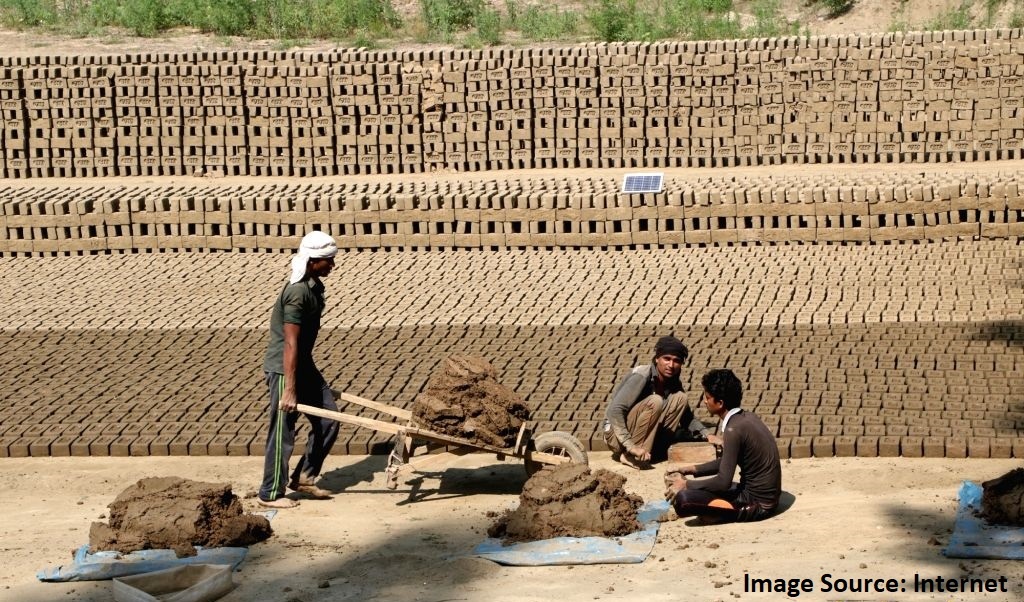The migrant labourers who are arriving here, risking their lives in the face of COVID-19 pandemic, are doing so because of the ‘economic unfreedom’ they face at their native places, Write Touseef Raina and JP Singh.
Lately, the people in Kashmir have stopped performing certain skilled/unskilled jobs which has led to creation of enough work opportunities to absorb the migrant labourers who, according to the Kashmir Life (a weekly news magazine published from Srinagar) report, number between 200 thousand to around half a million at the peak of summer.
This article is an attempt to delve into the phenomena of “seasonal economic migration” of non-local labourers to Kashmir in the light of understanding the circumstances while factoring in the raging pandemic coupled with fast changing political realities in the erstwhile State. In this context, the concept of “economic unfreedom” becomes a major point of discussion and deserves some discussion and deliberation as a factor to be considered as one of the variables impacting economic migration. “Economic unfreedom can also breed social unfreedom, just as social unfreedom or political unfreedom can also foster economic unfreedom.” Amartya Sen explains through these lines the important links and connections between different kinds of freedoms, which are interlinked and not contrary to each-other. So what do we learn about “seasonal economic migration” of the labourers from UP, Bihar, Punjab and other states into Jammu and Kashmir, from Amartya Sen’s interpretation of different kinds of freedoms? Simply put, the migrant labourers who are arriving here risking their lives in the face of the COVID-19 pandemic are doing so because of the ‘economic unfreedom’ that they face at their native places. Though this has always been the case here, however, today in the changed political circumstances, the “seasonal economic migration” has generated some anxieties. On the face of it, these anxieties may seem out of place, but it becomes evident from a cursory look that there might be some other factors which are fuelling the anxieties related to “seasonal economic migration” of non-local labourers to Kashmir.
Is it not a fact that the non-local labourers have been coming here for decades now? They would come here and work in Kashmir’s hill and dale even when militancy was at its peak. At a time when people – say tourists and at times even the locals — would be scared to even consider thinking of visiting relatively safer parts of the valley, the masons and painters from Bihar, carpenters from Punjab and West Bengal, brick-kiln workers from Jharkhand and Chattisgarh and unskilled labourers from all of these and many other states would migrate to the valley for the purpose of earning their livelihood. They were here before, during and after the Amarnath land row agitation of 2008. They didn’t go away during the subsequent summer agitations of 2009 and 2010. They remained here when floods struck Kashmir during September 2014. They did not run away in the summer agitation of 2016. In fact, during all these troubled times, it were the local Kashmiri people who went out of their way to help the migrant labourers whenever the latter faced any kind of distress. It goes without saying thus that they (migrant labourers) would not have left the valley during July-August 2019, had the government not issued an advisory asking them to vacate!
It is important to consider whether or not it is true that Kashmir has for years now been facing a perennial shortage of skilled and unskilled labour? Even though hundreds of thousands of Kashmiri youth are unemployed or underemployed, so much so that unemployment remains the biggest domestic threat to the societal well-being, yet the unsavory reality is that very few of these jobless people are ready to engage in certain skilled/unskilled jobs performed by the migrant work-force otherwise.
The non-local labourers not only work at the private and government construction sites, but they also help locals here in rice-farming. They also work in apple orchards. There are certain sectors which have become the exclusive domain of the skilled migrant workforce. The carpenters and plumbers, and even electricians come from outside the UT, engage as marble and granite workers. They work in bakeries, in furniture factories and joineries; they work as drivers, as ice-cream vendors, as cycle and car mechanics, as grocers and fruit-sellers. There is no job that is too small for them. 23.85% are unskilled labourers amongst these people. Days before the abrogation of Article 370, the officials of the erstwhile state issued orders asking all non-locals to leave the valley. As a result, people couldn’t get a haircut for months because barber shops and salons are manned by non-local workers. According to a survey carried out by the Department of Sociology in 2010 (University of Kashmir) about the socioeconomic status of migrant labourers, 23.85% are unskilled labourers. Skilled include 17.40% of masons, 10.06% each are carpenters and painters, 3.40% are hairdressers, 1.23% are vegetable sellers, 1.05% are salesmen. Besides, 0.42% are agriculture labourers, 0.05% are cobblers, 0.23% are constructors, 0.95% are tailors, 0.53% are ice cream makers as the remaining 22% comprises many of the other skilled sections that make up the small factions of the whole.
Local connotations
There are many job opportunities available in organized and unorganized sectors in Kashmir. However, the local youth are showing little interest or enthusiasm in grabbing them. So, it is the non-local labour force which comes to the scene. Until recently, it was fine with everyone and nobody had any qualms about it. But now it has suddenly become a “controversial” issue primarily due to the changed political circumstances in J&K. Despite the precarious situation created by the COVID-19 pandemic globally –and India certainly being no exception – it is the “economic unfreedom” at their native places that compels non-local labourers for “economic migration” in much the same way that those dealing in Kashmir with arts and crafts, travel to other states and other countries to sell their shawls, carpets, paper-machie and other such items. The management and IT professionals of Kashmir also go elsewhere to serve in the corporate world. If there is nothing wrong with Kashmiris going outside to study or work, by the same logic, there is nothing wrong if non-locals come to secure a job in Kashmir for purely financial reasons.
Official apathy
An important observation that arises while handling the anxieties of the local populace regarding the economic migration lies in the fact that the UT administration seems to always be on the back-foot over the issue. One way of rationalizing such apathy would be to cite the fact that the administration in the region has long been in a sort of flux, not actually knowing what it is or must be doing, and of course how. The lack of a Standard Operating Procedure and People Engagement Strategy on the part of the administration has clearly resulted in much misunderstandings. For instance, when some social media posts started fanning suspicions over the return of migrant labourers to Kashmir, the COVID-19 pandemic was used to lend some weight to these suspicions. The administration, in such circumstances, should have simply taken media persons to Lakhanpur or Qazigund and shown them how the requisite health protocols for COVID-19 are being “scrupulously followed” –the incoming labourers are being tested for possible infections at the two main entry points to the UT and the Valley. But instead, a statement was issued stating that the procedures are being followed; the same statement, however, while providing details of how many labourers were tested also revealed that “the majority of the swabs taken from the labourers are awaited”. Worst of all, no picture or video footage was shown to authenticate the official assertion. Even the mundane is unnecessarily pushed into needless controversies by making it sound dubious and suspicious. Call it lack of imagination and initiative on part of the top bureaucrats, or their abject carelessness – maybe it is all of them – the things which would ideally go unnoticed are ‘deliberately’ made to hog social media gaze and allowed to shape into popular debates!
Wayforward
The administration of Kashmir as well as the states which send their labour force here will have to create socio-economic conditions that would enable their people to earn a living at native places. It is time to concede that job markets create their own dynamics which have their own independent system that does not necessarily operate on the whims and fancies of the bureaucrats. Unlike the wind movement from high to low pressure areas, the movement of the migrant labour happens conversely — from areas of low employment and low returns to areas where avenues of profitable engagement are higher and emoluments better. –the labour force moves from areas of economic unfreedom towards the ones offering economic freedom. People of Kashmir have a reason to rejoice in the fact that they are the ones ensuring “economic freedom” to thousands of non-local labourers!
-Views are personal
References :
Labour Migration – Kashmir Life
J&K engages 41,000 labourers, mostly migrants, in 4,800 industrial units





